Saving the Shore Plover
by Helen Cordery
As birds go, the tuturuatu (shore plover or shore dotterel) could do with some urgent PR. While it’s tiny and amusingly docile, very few New Zealanders have ever heard of them.
In the meantime, this beautiful, endemic shore bird has been all but decimated by introduced predators, leaving just approximately 250 birds in both the wild and captivity.
Challenging success story
Pūkaha has been involved with saving the shore plover since the early 1980’s.
A challenging bird to breed, it is today one of our biggest success stories, with our captive breeding programme contributing to around 10% of the world’s total number.
We interview Mireille Hicks, the Pūkaha ranger overseeing the shore plover breeding programme (alongside Ali Hull), about what goes on behind the scenes!
Hi Mireille!
Can you tell us what a typical day looks like with the shore plover?
At 8:00 am we begin by preparing the food. We make a mix set out by Massey University to meet all their dietary requirements. In breeding season (September-Marc) we also add a bit of calcium.
At about 8:45 am we put out the food in a tray with salt water to mimic their natural environment. We check the birds while we are there, making sure they are happy and healthy. Then we leave them.
In summer we make them a second feed as it can get dry.
How does captive breeding work?
In a good season at Pūkaha, each established pair has about 3 clutches and we have 7 pairs of birds.
Of these, we hand rear the first two clutches because this encourages them to lay more.
The final clutch is reared by the parents.
What is the difference between these two approaches?
We take the first eggs from the nest at around 15 days and we place these in the incubator where they then hatch.
When they are around 28 days they go into an “Insect Proof Aviary” which is a natural environment but it has a very fine mesh to stop insects from entering it. Shore plover are very susceptible to Avian Pox which is spread by mosquitoes. This season, thankfully, we have had no pox at Pūkaha.
The birds then stay in this aviary until they are about 2 to 3 months of age, when they are then sent into the wild. DOC advises us where to send them; recently they have been going to Motutapu Island which is predator free.
The parent-reared approach is where the birds hatch and stay with their parents. At about 3 weeks, we put the chicks into the Insect Proof Aviary (separate to the hand-reared birds). They then go on to be released into the wild.
Shore plover are critically endangered. Why have they been hit so hard?
They nest on the ground so they are vulnerable to predators, especially rats. They also cannot fly when they hatch and it takes between 29-62 days until they fledge. Gulls can get them, falcons, morepork – it’s not only introduced predators that go after them.
They are also really curious little birds and they will try to protect their young. Recently I went to Waikawa [Portland] Island and the adults came right over to us, gave us a little peep. So they try to chase you off, which is quite unusual
Mireille, how did you get into working with the shore plover?
Well I have a background in many different things and in the Netherlands I worked in PR and Marketing. But I’d always wanted to work with animals.
When I came here from Australia I started to work in the Visitor Centre at Pūkaha and I was offered a chance to work with reptiles. I really love the reptiles. About three years ago I was asked if I wanted to work with the shore plover and I said yes.
I like working with the birds because I’m a hands-on person – I can’t sit still! It just feels so good to contribute and know you’re doing something good.
What else do you do at Pūkaha and what is the best way for people to get involved?
I also look after the whio (blue duck), which is reared in a similar way to the shore plover. The pāteke (brown teal) rears its own young because, although they are still endangered, nationally their programme has been a national success story.
Anyone can work with birds but it helps to have the right attitude and not be afraid to get your hands dirty. Volunteering is a great way to start, so that you get experience.
Find out more
We’ve got an Instagram post about the shore plover right here.
You can also find out more about saving the shore plover on your next visit to Pūkaha!
At select times throughout the year, our Behind the Scenes tour may allow a careful peek at where all the magic happens.
Can’t make it to the Wairarapa? Please take a look here to find out how you can get involved with conservation at home.
